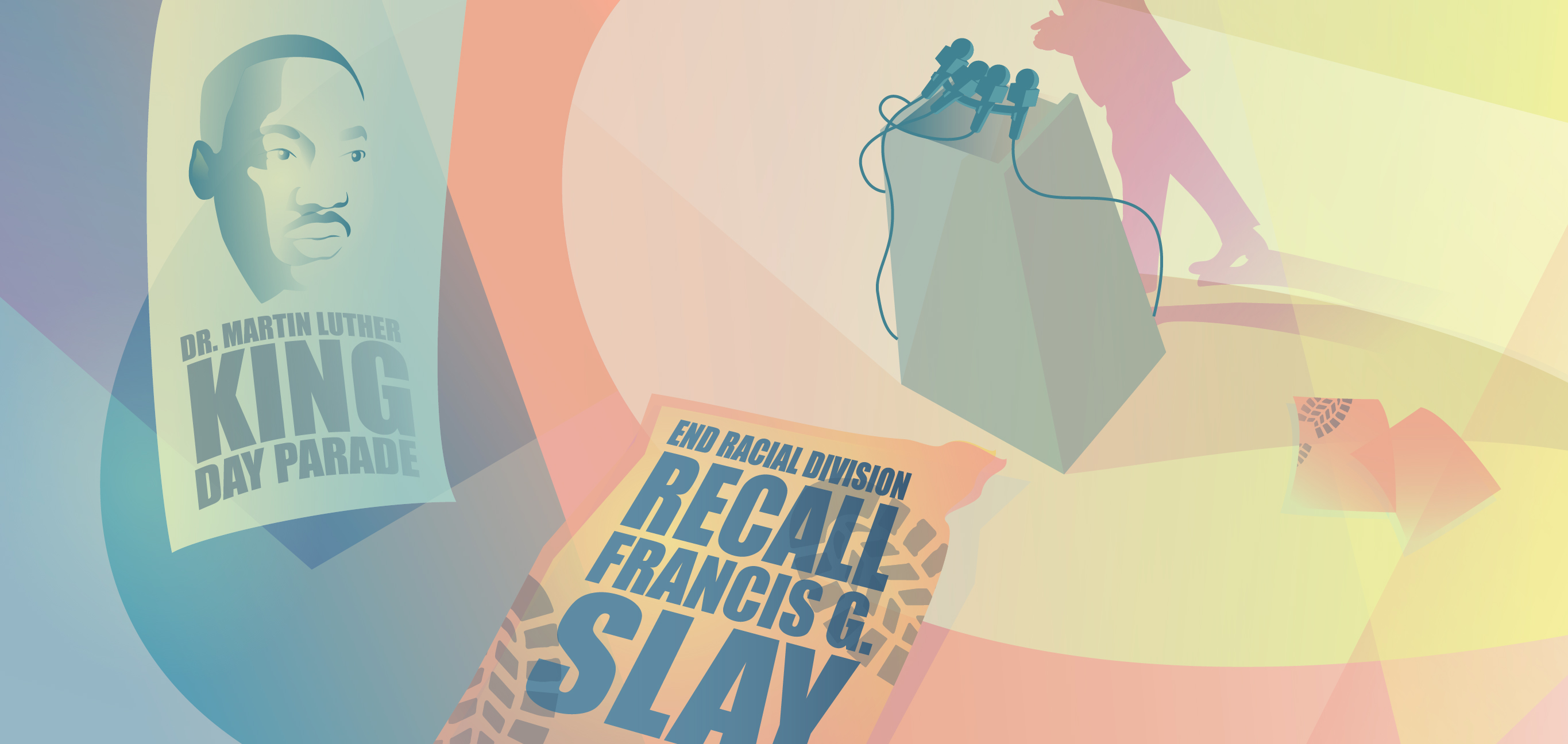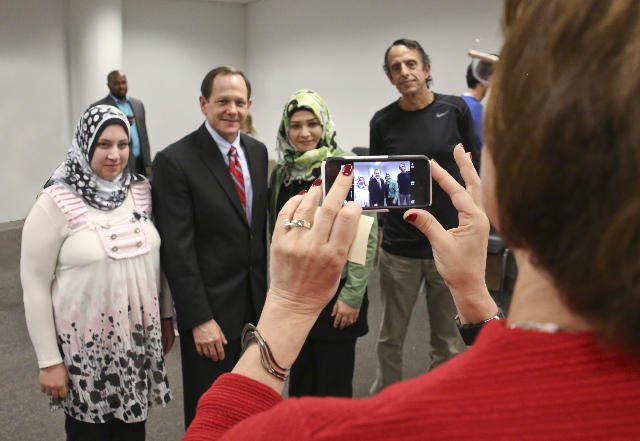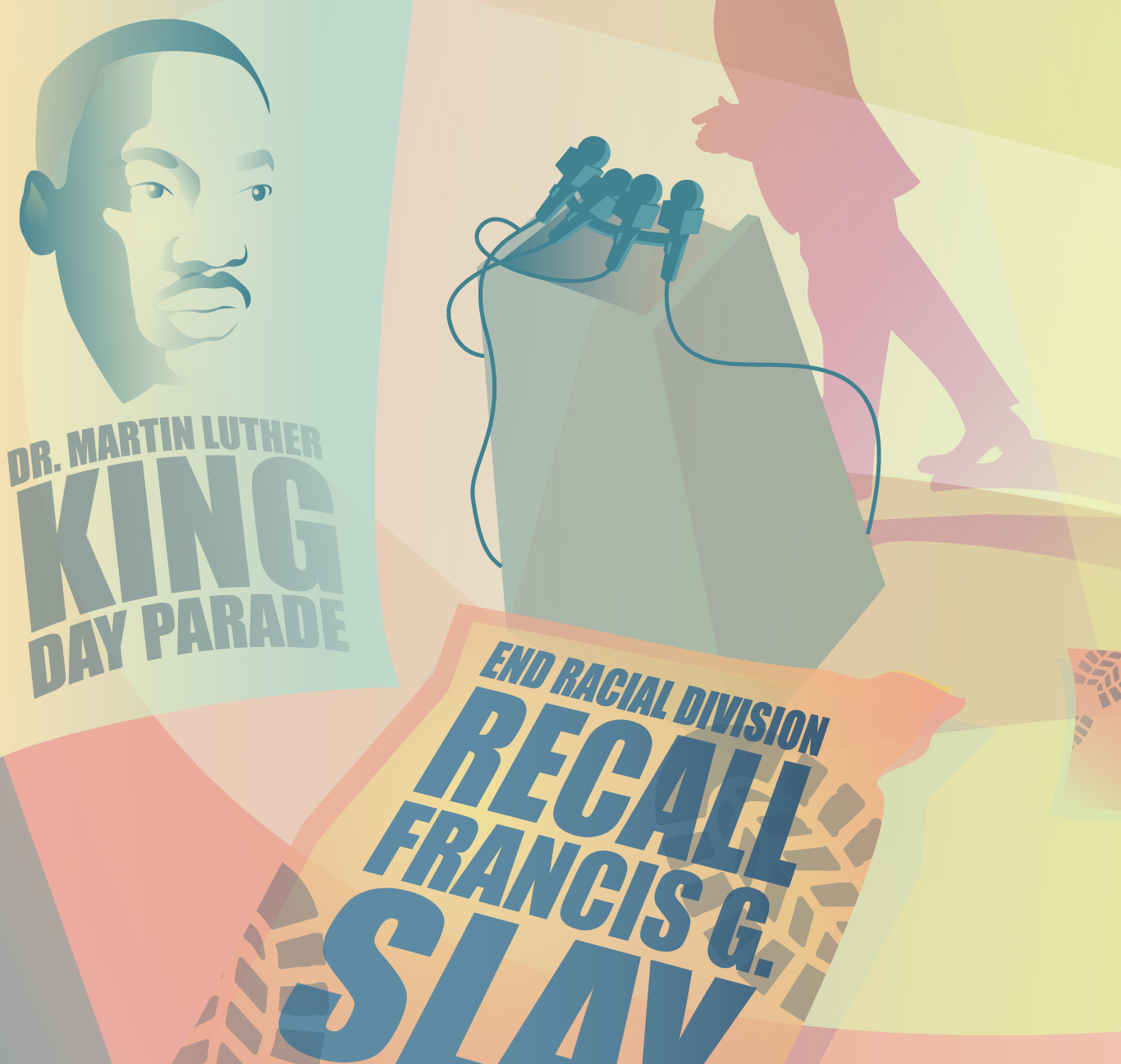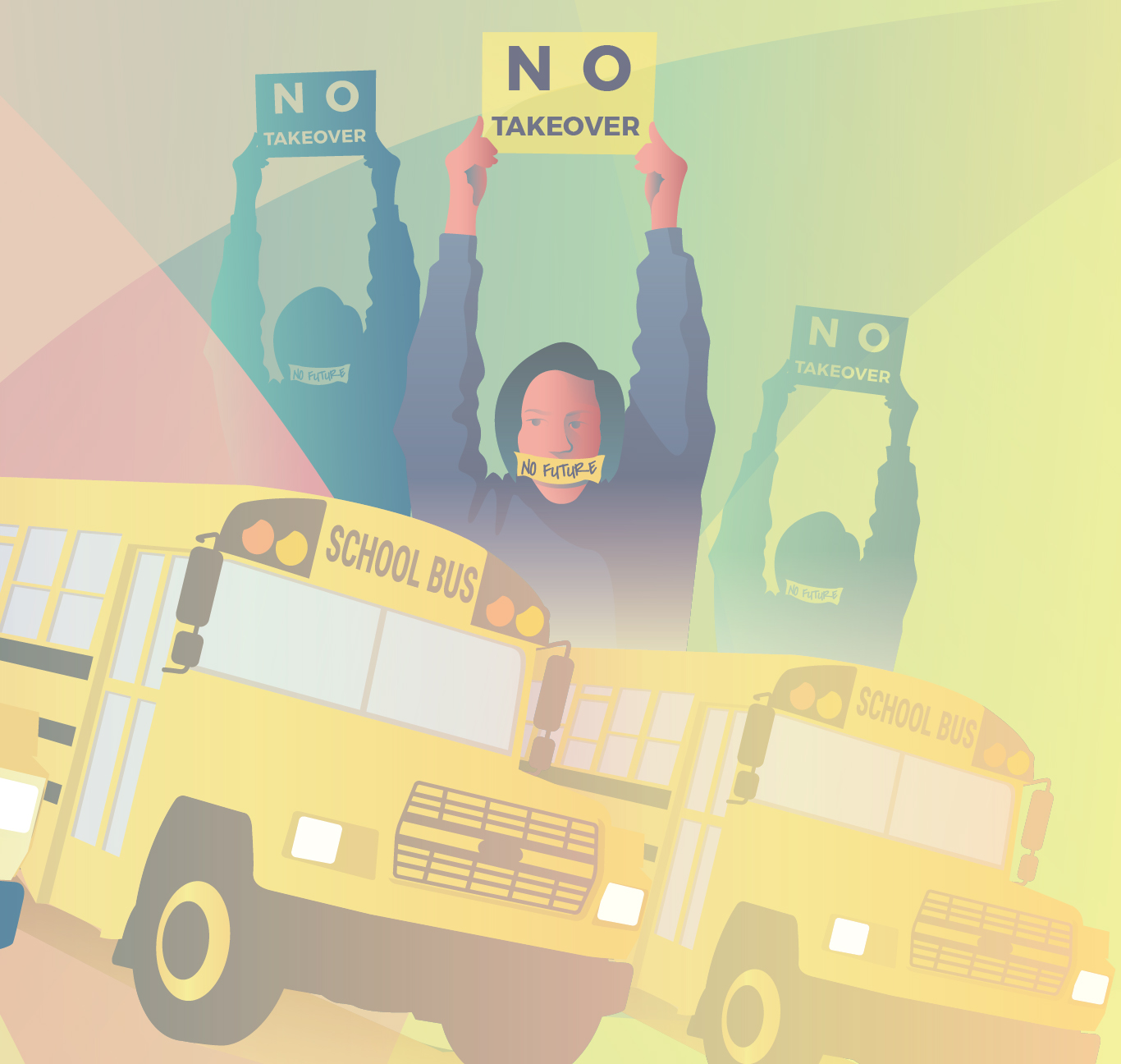Mayor Francis Slay’s 16-year tenure has been marked by several flashpoints around race relations and the city’s black-white divide. A nasty redistricting fight pitted him against several black, north-side aldermen. Slay’s demotion of the city’s first black fire chief prompted large protests. And when the unrest in Ferguson spilled into the city, he was forced to respond to long-simmering racial tensions.
Slay has maintained that he’s a mayor for all St. Louisans, seeking race-neutral solutions to its problems. Some civic leaders and members of his administration give him credit for building coalitions to chip away at the city’s long-standing divides. But others, including critics and leaders of nonprofit groups say his colorblind approach couldn’t fix disparities affecting the black community. Some neighborhood activists and political opponents go even farther, saying he played racial politics.
Family history
Slay came into office following a Democratic primary in which he beat both the city’s first and second black mayors. Slay said he was not playing racial politics but instead focused on restoring competence to City Hall. Still, the vote was racially split: predominantly white wards overwhelmingly voted for Slay, while he earned less than 10 percent of the vote in each of the city’s four most heavily black wards.
Still, some African-American community leaders had hope that he would begin to address the city’s long-standing racial divides. That’s because Slay’s family had strong connections with the black community going back decades. In the 1950s and ‘60s, the family restaurant, Slay’s, located on Hampton Avenue in The Hill neighborhood was one of the few white-owned businesses to serve black customers. That helped Slay’s father, who was also a politician, build strong relationships with black elected leaders.
Read more: Francis R. Slay’s obituary
Redistricting fight
Whatever goodwill the younger Slay had among African-Americans in the city was tested soon after he took office.
After the 2000 Census showed a 48,000-person drop in the city, particularly in north St. Louis, Mayor Slay and the Board of Aldermen went about redrawing ward boundaries. Slay championed a proposal to move the 20th Ward from north St. Louis to the Benton Park area. It had the added effect of eliminating the ward of one of Slay’s most vocal critics, Sharon Tyus, who is black. The redistricting proposal drew widespread criticism from north-side aldermen.
Antonio French | PubDef
During an attempt to filibuster the proposal, 1st Ward Alderman Irene Smith asked to use the restroom, but the board President Jim Shrewsbury said that would end the filibuster. Instead, behind sheets used as curtains, Smith allegedly urinated in a trash can. The incident made national news, garnering Smith a citation for public urination. That charge was later dropped, though Slay publicly condemned her actions as “unacceptable.” The redistricting was later approved with a 19-7 vote in 2001.
Alderman Irene Smith and Mayor Francis Slay debate the impact of the ward redistricting during the 2005 mayoral primary.
Excerpts of Mayoral Primary Debate hosted by KETC-Channel 9, St. Louis Public Radio, KSDK News Channel 5 and St. Louis Post-Dispatch
Greeted with boos
In time, Slay moved past the redistricting fight as well as a racially divisive school board election in 2003. By his first attempt at re-election in the 2005, Slay began to receive endorsements from some black community leaders. In his first run for re-election, he won more votes in the city’s predominantly black wards than in his first campaign.
By 2007, Slay found himself in a showdown with the city’s first African-American fire chief, Sherman George over promotions exams. Previously, in 1976, the city entered a federal consent decree to make changes to the exams after a court found discrimination against black firefighters.
In 2004, another lawsuit was launched over the exams. George halted promotions because he was concerned the exams were racially biased and did not test for the skills a firefighter needs to know to fight a blaze. In 2007, a trial court found no racial bias in the exams. Slay wanted the lapsed promotions immediately made. George refused over his continued concerns.
So Slay asked his new public safety director, an African-American man named Charles Bryson, to demote George. The demotion led to protests, black aldermen asking Slay to reconsider the demotion, and an unsuccessful attempt to recall Slay.
Antonio French | PubDef
The controversy came to a head at the 2008 Martin Luther King Jr. Day ceremony at the Old Courthouse in downtown St. Louis. Slay was booed as he approached a microphone to make his remarks. His speech was drowned out with chants of “Recall Slay” and “Bring Back George”.
Recorded and uploaded to YouTube by various people
The lapsed promotions were then made; and a new chief, Dennis Jenkerson, was appointed shortly thereafter. He was white. Meanwhile, in 2008, an Appeals Court in affirmed the trial court’s earlier decision that the firefighter exams were not discriminatory. George also had retired and lost a discrimination lawsuit against the city.
Mayor Slay says he wouldn’t have handled the fire department promotions and the demotion of Sherman George differently.
St. Louis on the Air, Feb. 26, 2009
A base of white supporters
Following the controversy over George’s demotion, Slay saw a drop in support from the city’s five most heavily black wards.
Looking just at the Democratic mayoral primaries, where Slay faced the most significant competition, reveals how much support he got in predominantly white versus black wards.
In all four primaries, Slay never averaged more than 33 percent of the vote in the city’s five most heavily African-American wards. In contrast, he never averaged less than 80 percent of the vote in majority white wards. This makes sense, given Slay’s traditional power base includes these southwest-side wards.
Slay's support by ward
Loading...
Support for immigrants and refugees
For as much as Slay took a race-neutral approach on black-white divides, Slay has been an outspoken supporter of immigrants and refugees coming to St. Louis.
In 2012, Slay was presented with a Saint Louis University study that showed the city lagged in immigration, but could greatly benefit economically from attracting more foreign-born residents. Slay’s administration has been active in regional efforts to tap into those economic benefits, and has also set up an Office of Diversity and Inclusion.
Slay also has been vocal about the plight of refugees. In 2014, he offered to take in 60 unaccompanied minors migrating from Central America. In recent years, he has strongly defended the city resettling Syrian refugees and denounced the Trump administration’s temporary ban on refugees entering the U.S.
In explaining his support, Slay often spoke about his family’s immigrant history, including during a 2016 Thanksgiving gathering with refugees at the International Institute:
“My grandparents were Syrian immigrants,” said Francis Slay.
Hannah Westerman | St. Louis Public Radio
Ferguson protests spill into St. Louis
Perhaps the biggest racial flashpoint in the broader St. Louis region during the 16 years Slay was in 2014. The shooting death of Michael Brown by then-Ferguson police officer Darren Wilson brought intense protests and scrutiny over the region’s racial disparities.
St. Louis was not immune to concerns over racial disparities in traffic stops and arrests, police-community relations, and a lack of economic opportunities for minorities. Protesters marched and chanted through City Hall in October 2014, demanding to meet with the mayor.
Rebecca Rivas | St. Louis American
The protesters called on him to make changes, including instituting a civilian review board of the police department and independent reviews of officer-involved shootings. The night a St. Louis County grand jury announced it would not indict Darren Wilson, protesters marched and blocked traffic along Grand Boulevard, onto Interstate-44, and along Arsenal Street, before being dispersed after police fired tear gas. Some businesses on Grand were vandalized.
On the six-month anniversary of Brown’s death, protesters demonstrated in front of Slay’s house in the Boulevard Heights neighborhood, calling on him to give subpoena power to a civilian oversight board and to discuss racial disparities with Ferguson activists.
Slay’s response to the Ferguson-related protests marked a shift in his message. Previously he promoted race neutral solutions to the city’s problems. After the events surrounding Ferguson, he began talking about how racial inequities must be addressed, and touted the creation of more jobs for youth and economic opportunities for minority communities. He also promoted efforts to improve police-community relationships, including a compromise that established a civilian oversight board but did not give it the power to subpoena witnesses and documents.














